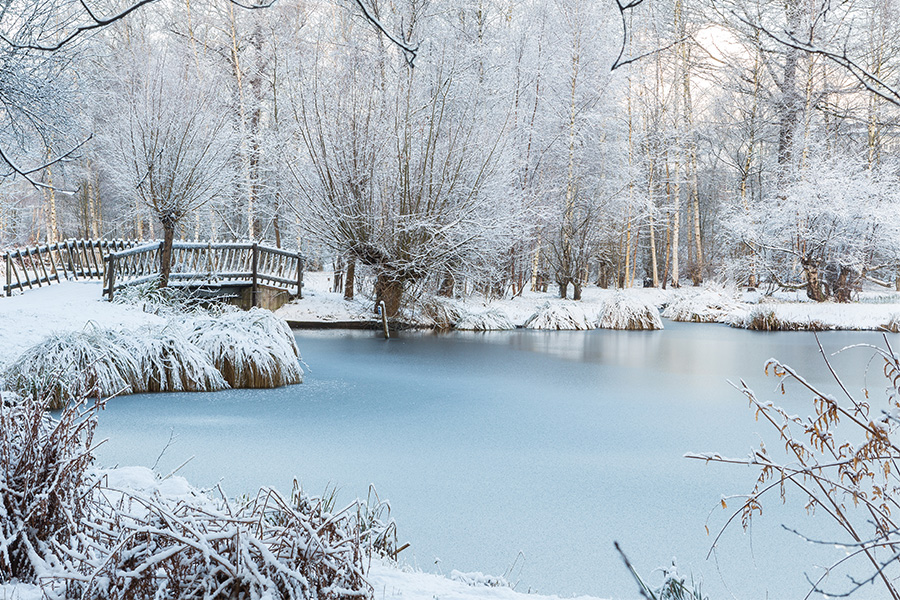
As the winter season gets closer, many places will see colder weather close to or even below freezing. Around this time, pond owners everywhere should start getting ready for the coming colder months. Fish are delicate creatures vulnerable to cold, particularly temperatures below 40 degrees Fahrenheit. You will experience a winter fish kill if you don’t use proper methods to protect your fish. However, if you adhere to a few straightforward guidelines, you can stop this from happening.
Aeration Makes a Difference
Generally, you should provide your fish with enough oxygen throughout the year. This will keep your fish healthy and growing throughout the year, even in the winter. Aeration is essential in winter to keep your fish warm under the water. In addition, your pond’s risk of ice formation will be reduced by maintaining a steady flow of moving water.
Utilizing a Deicer
Your primary objective is to prevent ice formation at the top, even though the pond’s bottom water remains warmer than the surface water. Why? Your fish will be effectively trapped if ice forms on the surface of your pond. In this circumstance, a deicer would be an excellent choice to keep your fish’s air column open. The deicer keeps this area thawed by floating on the pond’s surface. The Ice Away De-Icer is ideal for keeping your pond open to protect your fish and the overall health of your pond.
Ventilation Using an Open Hole
Keep in Mind: A deicer is not a heater. It helps keep ice at bay by keeping your pond water moving. All you need is a hole big enough to let the trapped gases out, even though the rest of the pond might freeze. Your fish will inevitably be suffocated by gases that are trapped in the water if there isn’t a hole left open. Decomposing organic matter that remains trapped in the pond is the cause of these poisonous gases. When you inject oxygen into the pond and allow it to escape, a natural cycle prevents your fish and other pond life from living in a healthy environment.
Leaving a Warm Spot in the Pond
You must also take into account the temperature of the water as well as the risk of toxic gases harming your fish. The bottom of deeper ponds typically contains warmer water. However, if your pond is shallow, keeping the water warm may be much more challenging. Providing warm areas around the pond where your fish can swim during the winter is your best option. To produce the warm water, you can strategically position diffusers in these locations. Keep your deicer and aeration system running together to avoid a winter fish kill this season.